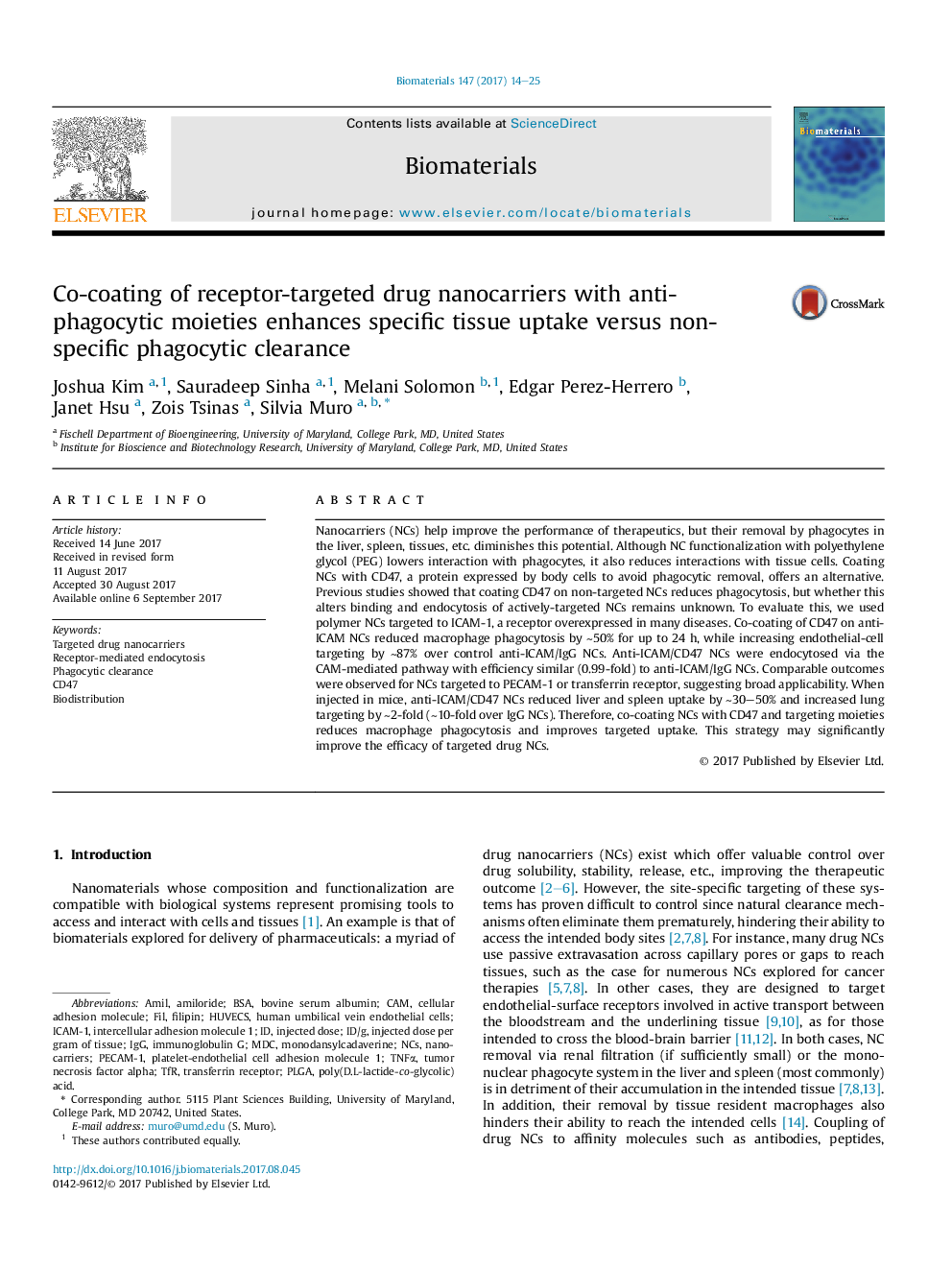| Article ID | Journal | Published Year | Pages | File Type |
|---|---|---|---|---|
| 6450544 | Biomaterials | 2017 | 12 Pages |
Nanocarriers (NCs) help improve the performance of therapeutics, but their removal by phagocytes in the liver, spleen, tissues, etc. diminishes this potential. Although NC functionalization with polyethylene glycol (PEG) lowers interaction with phagocytes, it also reduces interactions with tissue cells. Coating NCs with CD47, a protein expressed by body cells to avoid phagocytic removal, offers an alternative. Previous studies showed that coating CD47 on non-targeted NCs reduces phagocytosis, but whether this alters binding and endocytosis of actively-targeted NCs remains unknown. To evaluate this, we used polymer NCs targeted to ICAM-1, a receptor overexpressed in many diseases. Co-coating of CD47 on anti-ICAM NCs reduced macrophage phagocytosis by â¼50% for up to 24Â h, while increasing endothelial-cell targeting by â¼87% over control anti-ICAM/IgG NCs. Anti-ICAM/CD47 NCs were endocytosed via the CAM-mediated pathway with efficiency similar (0.99-fold) to anti-ICAM/IgG NCs. Comparable outcomes were observed for NCs targeted to PECAM-1 or transferrin receptor, suggesting broad applicability. When injected in mice, anti-ICAM/CD47 NCs reduced liver and spleen uptake by â¼30-50% and increased lung targeting by â¼2-fold (â¼10-fold over IgG NCs). Therefore, co-coating NCs with CD47 and targeting moieties reduces macrophage phagocytosis and improves targeted uptake. This strategy may significantly improve the efficacy of targeted drug NCs.
Graphical abstractSurface functionalization of drug nanocarriers with both CD47 and targeting moieties provides anti-phagocytic properties for reduced non-specific clearance while enabling specific receptor-mediated uptake by target tissue cells.Download high-res image (233KB)Download full-size image
